John Hurrell – 15 April, 2020
Except this eight-artist exhibition has nothing to do with photography (as a practice) or music—the two areas where the term analogue is in most popular usage. The subtext of this show is really the fetishization of manual dexterity and specialist studio practice, but you could argue this applies to contrasting computer keyboard players and IT boffins too—so whoop-de-doo. Why get hung up on verisimilitude and skill if you have the thinking ability to mentally negotiate your way around them?
Auckland
Gary McMillan, Kevin Malloy, Ceara Metlikovec, Kemal Seyhan, Sofie Muller, Marie Harnett, Ruth Cleland, James White
Analogue
5 March - 11 April 2020
(*Dates announced before the Level 4 Covid-19 lockdown)
It is a strange thing indeed at this time to be looking on your computer screen at a discussion about a show that celebrates analogue-where walk-in gallery spaces and any notion of artwork ‘presence’ seem to be rapidly slipping away, not in mere theory but for real.
The exhibition title makes sense if you consider these works as a lashing out against computerised painting machines and three-dimensional printing where digital processes enable sculptures to be made of thinly layered plastic.
Except this eight-artist exhibition has nothing to do with photography (as a practice) or music—the two areas where the term analogue is in most popular usage. The subtext of this show is really the fetishization of manual dexterity and specialist studio practice, but you could argue this applies to contrasting computer keyboard players and IT boffins too—so whoop-de-doo. Why get hung up on verisimilitude and skill if you have the thinking ability to mentally negotiate your way around them?
In fact, the tension within the wide scope of projects here seems to be between abstraction (the geometric gridded minimalist variety) and ‘photographic’ realism. If you stretched out a scale to pop the works into—hyper-realism at one end at #1 and module-structured minimalist abstraction at #10, and a balanced mixture in the middle—it (as an interpretative overview) would go something like this:
#1 (Harnett works). #2 (White works), #3 (McMillan: Scene 42), #4 (Muller works), # 5 (Cleland: Room), #6 (Malloy work), #7 (McMillan: Scene 43), #8 (Cleland: Gold), #9 (Seyhan work), #10 (Metlikovec works).
As I’m arguing a case here, let’s put in situ exhibit positioning to one side and work from left to right with the order of the gallery images, moving from 1 to 10, from ‘super realistic’ verisimilitude to circular radial abstraction.
Artists like White, McMillan, and Harnett have as stimulating starting off points, photographic images that could be coloured or black and white, analogue or digital. Their production, as objects not to be replicated but as subject-matters to be transmuted into something else, is not as a foil for the end result. They are only a means to an end, that end often being very different—perhaps in its cropping, brusherly gestures (in the case of White), changes in colour or focus, or scale.
With the painting by Kevin Malloy of a turntable with a record stacking spindle, the depiction of an obsolete technology is the point, that image filtered wittily through a field of hovering discs that is bifurcated horizontally.
Sofie Muller‘s alabaster hands emerging from rock (in the style of Rodin) have as plinths, sandbags and charred circular worktables that function as sculpture in their own right, supporting nests for the carving, blackened towers that with their diminishing repetitions hint of the grids to come with the paintings.
When we look at that other end, the ceramic works of Ceara Metlikovec could—at a stretch—be the dried calyxes of poppy flowerheads, the ‘abstraction’ of Kemal Seyhan shimmering light traversing closed velvet curtains (suggesting mysticism), and Ruth Cleland‘s chiselled-out horizontal sunroom floorboards (looking down from a high altitude).
Or, am I absolutely mistaken? Is their ‘realistic deciphering’ obvious and my putative abstraction itself ‘a stretch’? Is the sense of sequential transition that I have elucidated an illusion, and almost all these works (Malloy being the exception) analogue realism exemplified?
If you are attracted to contradictions, this is a nice show to think about.
John Hurrell
Recent Comments
Ralph Paine
And a nice ARTICLE to think about: thanks! For a philosophical analysis of both the photographic and the digital see ...
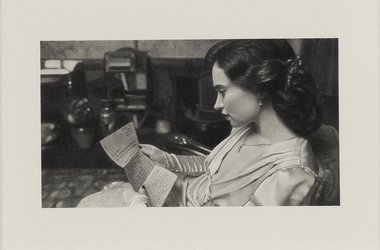
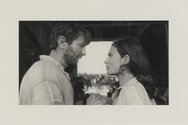
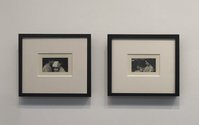
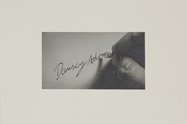
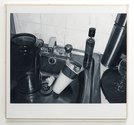
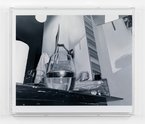
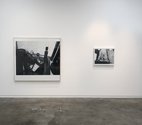
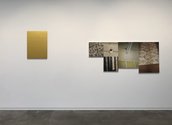
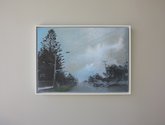


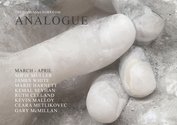
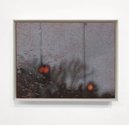
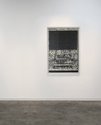
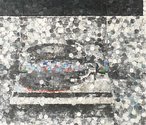

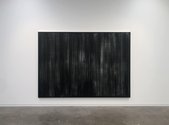
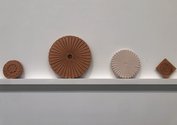
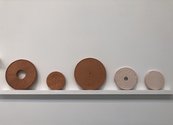

 Two Rooms presents a program of residencies and projects
Two Rooms presents a program of residencies and projects Advertising in this column
Advertising in this column



This Discussion has 1 comment.
Comment
Ralph Paine, 9 a.m. 16 April, 2020 #
And a nice ARTICLE to think about: thanks!
For a philosophical analysis of both the photographic and the digital see Alexander R. Galloway, Laruelle: Against the Digital, Minneapolis & London: University of Minnesota Press, 2014.
Mr Galloway blogs at:
http://cultureandcommunication.org/galloway/
If one back tracks through the entries there are many dealing with the digital vs the analog via an ontological approach...
"The one dividing into two, the two coming together as one."
Participate
Register to Participate.
Sign in
Sign in to an existing account.